Book Reviews
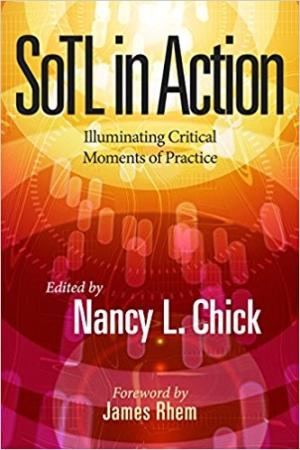
Academics trained in different fields are sometimes at a loss of how to conduct research in the scholarship of teaching and learning (SoTL). Does SoTL have its particular methodologies different from those of other fields? Who are the audiences of SoTL and how can one join the conversation? Is there a quick guide, which introduces the diverse approaches with illustrations? Can we learn from the experts, who can provide advice and point out the pitfalls? This book is helpful for beginners to think more clearly of the scope and research in SoTL, and it also provides insights for seasoned scholars who want to learn from others in diverse disciplines. The book is divided into three parts. Part 1 focuses on the foundations of SoTL, including discussion of the origins of SoTL projects, ways of identifying research issues, the relationship between educational research and SoTL, and the alignment of research methods with purpose. In Part 2 contributors offer examples of specific research methods with examples. These methods include questionnaires, classroom observation, conducting interviews, close reading of student artifacts, and the use of think-aloud protocols developed by cognitive psychologists. Part 3 focuses on making impact and touches on writing and reading SoTL and participating in SoTL conferences. In putting the book together, editor Nancy L. Chick does not want to introduce SoTL in the abstract, but wishes to illumine critical moments in practice through vignettes and examples. Each chapter is like listening to a colleague reflecting on a particular issue in SoTL, drawing concrete examples from classroom practice and research. In the chapter on using questionnaire, for example, the author does not provide a step-by-step guide to creating a questionnaire. Rather, the author shows how he reflects on the big-picture conceptual issue questions related to SoTL when designing the questionnaire. Each chapter includes a helpful reference pointing to further readings. The discussion throughout the book is engaging and shows the authors’ commitment to teaching and to SoTL. It motivates us to become better teachers through engagement with the literature in SoTL. It is encouraging for those of us not trained in social-scientific methods to see that classroom observation and closing reading of student artifacts can also produce SoTL. The chapter on classroom observation explains the process of involving other colleagues to observe teaching in action. The chapter on close reading explains the difference between closing reading for SoTL and grading assignments. While the examples given are helpful, the book would be more useful if it attended to the challenges of doing SoTL research in diverse classrooms, taking into consideration race, gender, sexuality, class, and culture. It would be more up-to-date if it included discussion in SoTL on teaching generation Z students and non-traditional students, and teaching online and hybrid courses, as they are becoming more common in higher education.
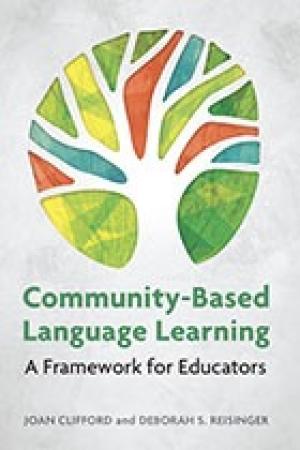
Can we escape political injustice when we learn a language? Most people would say that language and justice issues are separate, but according to this book’s authors, Joan Clifford and Deborah Reisinger, learning another language cannot be completed by simply gaining a linguistic skill in a classroom. They reason that language learners cannot overlook the diverse cultural and social factors of those who live in their own language community. Therefore, the book introduces the importance of local community-based learning for second-language learners (CBLL, as the authors abbreviate) to build a better educational framework. Specifically, Clifford and Reisinger, US-based language professors, pay attention to the unique experiences of second-language student learners with relation to their local communities in America. As described in Chapter Four, speaking the dominant language in a society gives one access to the society’s dominant culture. For example, in the United States, English holds such a power. The problem is that “not all ways of speaking English are created equal in certain social spaces” (101). On the surface, second-language English speakers seem unimpeded in their access to America’s educational and health services, but actually their different accents and cultures are often undervalued “in the school system which prizes and reproduces dominant (white, English-speaking) culture” (101). That is, for second-language learners, where their living language communities are located, economically, socially, and politically, matters when they try to access America’s dominant cultural group. Although Clifford and Reisinger focus on the American learning situation and social injustice issues, their audience is not limited to American educators. Rather, by providing a better local community-based learning model, the authors hope that students will critically reflect and challenge problems which are imbued in their social structures. Regarding this, the book is not only useful for learning foreign language but also for other areas such as the missionary context where theological subjects are taught in English or in other languages. Further, within this emphasis on local communities as a learning partner, for both students and teachers, learning another language allows students to encounter something more than language. That is, it can be a place for the students to experience a “dissonance” between their previous beliefs about their own community’s problems, and those that appear through CBLL conversation. For the teachers as well, this conversation offers a chance to reconsider their cultural privilege and power, and how this might affect their students who come from diverse communities. Finally, the book means to create “brave spaces” for “genuine dialogue” between learners, educators, and communities by coping with their conflicts or tensions to deeply understand and challenge social injustice issues (140). To do this, the book structures each chapter with reflections for instructors and activities for students to provide a practical framework of CBLL. This book would be valuable for both educators and their students who are considering their communities as important learning partners with relation to their own ecclesial, social, and cultural context.
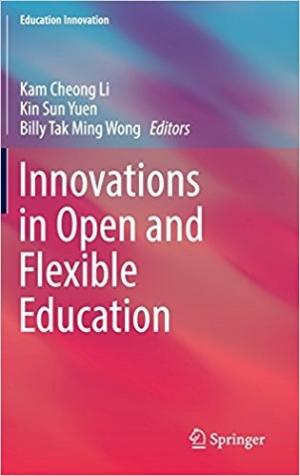
Innovations in Open and Flexible Education is a timely collection of research which examines various aspects of open and flexible education in the global community’s changing landscape of teaching and learning. The book is written for professors, academics, researchers, students, educational practitioners, and administrators to learn the latest empirical research in regard to open and flexible education. The book is organized thematically with a focus on four major themes: open/flexible curriculum and pedagogy, mobile and ubiquitous learning, digitized media and open educational resources, and tracking and analysis of student learning. The book includes qualitative and quantitative research studies, empirical and case studies, statistical analyses, descriptive surveys, and interviews. Part I flows seamlessly as the contributing authors discuss historical perspectives, student perspectives, budget planning, needs assessment, models of the flipped classroom, cross-country analysis, and massive online open courses. Part II focuses on the use of mobile devices, specifically in vocational education and training, preferences and readiness for usage, the use and design of specific apps for learning, and learning management systems. Part III of the book examines digitalized media and open educational resources including game-based learning, flipped massive online open courses, open educational resources, videos in blended learning, and media literacy. The final section of the book, Part IV, analyzes student learning including the use of big data in teaching and learning, instant messaging, application programming interfaces to track learning, reinforcement learning, and the design of data-logging devices. The findings of this book are exciting. According to Lee, the purpose of flexible learning is to “achieve equity, efficiency, and effectiveness” (31) in education. As the editors note in the introduction to the book, there is a global trend of knowledge becoming more publicly accessible and less reserved for the privileged. As education is becoming more open and consequently more flexible, education at large is more available to all people. This book highlights the latest research on this topic, which may lead to educational stakeholders creating more open and flexible landscapes in their educational communities. As Christian scholars, this must be one of our aims—to make education more inclusive and flexible to welcome and benefit all learners. The organization and structure of the book is not only informative but is enjoyable to read. The editors selected topics that are connected but remain distinctly different, which creates an interesting and diverse reading experience. Furthermore, the content in this book leads to much introspection on the part of the reader; the reader is challenged to consider what open and flexible pedagogies they have adopted in order to benefit all students. The research provides a fertile ground for discussions of education theory, pedagogy, and praxis. The book is comprised of twenty-three chapters that are written with experiences and perspectives from Asian countries (including Australia) and is a part of a research book series titled Education Innovation. For further work on this topic, it would be valuable for the editors to develop a book series that focuses on research from different continents on open and flexible education. The contents of this book demonstrate the diversity and richness of this topic, so perhaps this text could be expanded into a series.
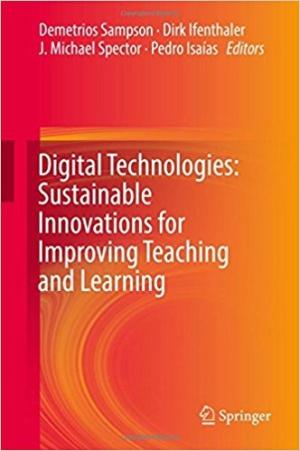
Graduate theological education is experiencing a variety of upheavals, including learning how to navigate the digital technologies transforming the teaching-learning process. Navigating these changes necessitates that graduate theological schools and seminaries adopt the mindset of an educational technology company. Editors Sampson, Ifenthaler, Spector, and Isaías have assembled a collection of international research articles in Digital Technologies: Sustainable Innovations for Improving Teaching and Learning. The articles are organized around four themes: “Transforming the Learning Environment,” “Enriching Student Learning Experiences,” “Measuring and Assessing Teaching and Learning with Educational Data Analysis,” and "Cultivating Student Competencies or the Digital Smart Society.” The rich data found in each of the articles will assist institutions in asking good questions as they seek to discern the instructional tools they will employ to enhance learning. The essays address the use of digital technologies principally in either a K-12 environment or college-level STEM programs. Despite their focus on different educational contexts, the essays are helpful in explaining the role digital technologies are playing in the educational environment and challenging one to think imaginatively about the implications for graduate theological education. Wrestling with the articles was enjoyable but imagining how they apply to theological education was enlightening and frustrating at the same time. The articles lack a shared definition of “learning,” this combined with the ends/outcomes of education being implied made assessing the educational value for theological education difficult. In the end, imagining the implications of these articles for theological education was more like making conjectures or discussion starters rather than the bases for working hypotheses. Digital Technologies will serve as a helpful resource when evaluating digital technologies for inclusion in an institution’s educational strategy. The international character and depth of the articles help one ask good educational questions when evaluating digital learning tools. Asking good technological questions consistent with one’s theological heritage is consistent with being an educational technology company, especially as theological institutions seek to be more nimble in identifying, assessing, evaluating, and implementing sustainable digital technology to enhance learning.
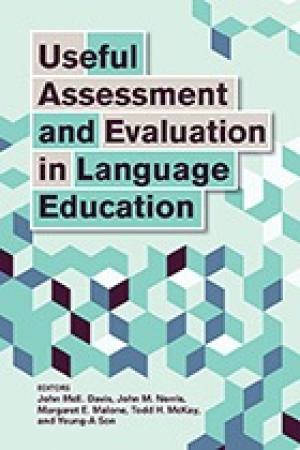
This book is a collection of fourteen essays representing presentations made at the 2016 Georgetown University Round Table (GURT) conference, sponsored by the Georgetown University Department of Linguistics and the Assessment and Evaluation Language Resource Center (AELRC). These essays showcase a diverse set of ap-proaches to treating assessment and evaluation as “tools of educational transformation” for foreign-language learning (vii). They focus on primary, secondary, and undergraduate-level foreign language instruction, with none concentrating specifically on graduate-level theological education or religious studies. Nonetheless, the volume offers some novel proposals for structuring language courses that may benefit biblical or modern language sequences offered in theological schools and religious studies pro-grams. The book is organized into three sections, each representing emerging research and praxis on transformative foreign language assessment and evaluation for e-learning platforms, language course instruction, program development, and ESL student placement. Part one—Connecting Assessment, Learners, and Learning—surveys theories and practical implementations of assessment and evaluation for enhancing language learning, particularly from the perspective of student and teacher self-assessment processes. In five essays, this section establishes self-assessment as a continual process and offers practical steps for integrating self-assessment in foreign language acquisition. Part two—Innovating, Framing, and Exploring Assessment in Language Education—covers topics such as the formative use of task-based assessment “in primary schools, the implementation of technology-mediated speaking performance assessment, and validation of educational placement decisions for immigrant learners” (ix). Some of the proposals may provide seminaries and graduate-level liberal arts programs fresh avenues for (1) going about its sequence of biblical language instruction or (2) resourcing multilingual students navigating North American theological and religious education. Part three—Validity Evaluation—includes five essays that address processes for assessment validation, such as corroborating the outcomes of university entrance exams or language placement exams with student achievement and retention. These essays provide suggestions for the evaluation of overall language programs implemented by institutions. As a whole, it may supply new considerations about evaluating outcomes of language instruction for theological ESL programs. The perspectives offered in this volume present innovative research on foreign language learning from outside the academic contexts of theological education and religious studies. As a result, they reflect fresh theoretical and practical considerations that may not have, as of yet, permeated conventional resources and “common knowledge” about assessment and evaluation in theological education. While it may prove to be a beneficial read, those primarily located in theological education and religious studies who grapple with issues of language instruction—especially biblical language instruction or the implementation of theological ESL programs—may still find this a challenging read. While the scholarship is relevant at times, its application is left to the reader from theological education and religious studies to make. Despite this potential difficulty, the volume represents the kinds of knowledge and resources available to theological education and religious studies from other educational stages and learning environments that may be further along in considerations about institutional learning processes, e-learning pedagogy, foreign language classroom instruction, and support of multilingual, international students.
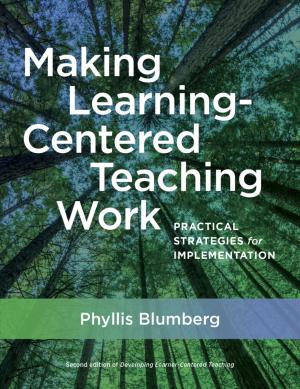
This is a substantially expanded and enhanced revision of Phyllis Blumberg’s acclaimed and bestselling book, Developing Learner-Centered Teaching: A Practical Guide for Faculty (Jossey-Bass, 2009). This easy to follow how-to-guide provides faculty with both a thorough introduction to this evidence-based approach to teaching and practical guidance on how to progressively implement it to strengthen the impact of their teaching. It demonstrates how they can integrate learning-centered teaching into their classroom practice without sacrificing content and rigor, and how to positively engage students in the process by demonstrating its impact on their mastery and recall of key concepts and knowledge. An added outcome, given that learning-centered teaching is correlated with improved student learning, is the resulting assessment data that it provides faculty with the measures to meet the increased demands by accreditors, legislators and society for evidence of improved teaching and learning outcomes. Phyllis Blumberg demonstrates how to use rubrics to not only satisfy outside requirements and accreditation self-studies but, more importantly, for faculty to use for the purposes of self-improvement or their teaching portfolios. She provides examples of how the rubrics can be used to ascertain whether college-wide strategic plans for teaching excellence are being met, for program review, and to determine the effectiveness of faculty development efforts. The book includes the following features: - Boxes with easy-to-implement and adaptable examples, covering applications across disciplines and course types - Worksheets that foster easy implementation of concepts Rubrics for self- assessment and peer assessment of learning-centered teaching - Detailed directions on how to use the rubrics as a teaching assessment tool for individuals, courses, and programs - List of examples of use classified by discipline and type of course Phyllis Blumberg offers Making Learning Centered Teaching Course Design Institutes and workshops on this and other teaching and assessment topics. Half day to multiple day modules. (From the Publisher)
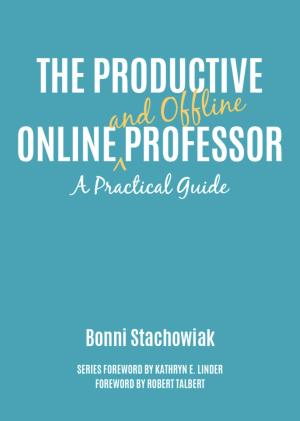
What does it mean to be a productive professor in higher education? What would it feel like to have more peace and productivity? To have nothing fall through the cracks? The Productive Online and Offline Professor is written for today’s busy higher education professional. Through an exploration of what it means to make work meaningful, this book offers practical strategies and tips to support higher education professionals in efficiently managing and effectively using a wide range of technologies and productivity tools. Higher education instructors will find this guide helps them to fulfill their teaching roles with excellence and to build engaging relationships with students while also successfully managing other priorities in their professional and personal lives. The Productive Online Professor assists those who teach online and blended courses with managing their personal productivity. Faculty are often expected to provide support and feedback to learners outside of normal work hours in non-traditional classes. Programs that are designed with more asynchronous content may cause faculty to perceive that it is difficult to ever press the “off button” on their teaching.The author offers guidance and suggests software tools for streamlining communication and productivity that enable faculty to better balance their lives while giving rich feedback to students. Part 1 addresses the challenges in defining productivity and presents a working definition for the text. Part 2 describes the ability to communicate using both synchronous and asynchronous methods, along with ways of enriching such communication. Part 3 describes methods for finding, curating, and sharing relevant knowledge both within one’s courses and to a broader personal learning network (PLN). Part 4 examines specific tools for navigating the unique challenges of productivity while teaching online. It includes ways to grade more productively while still providing rich feedback to students. Part 5 shares techniques for keeping one’s course materials current and relevant in the most efficient ways possible. The Productive Online Professor is a practical guide for how to provide high quality online classes to diverse students. This book shares specific technology and other tools that may be used in charting a course toward greater productivity. It is intended to be a professional resource for fulfilling our roles with excellence and joy, while managing other priorities in our personal and professional lives.(From the Publisher)
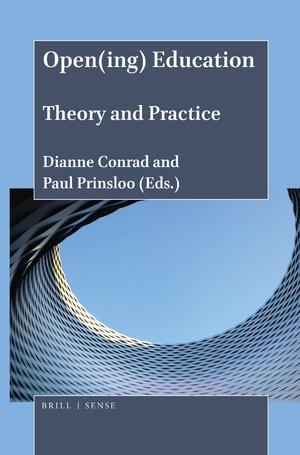
There is no shortage of scholarly research that reflects the growing importance of open education, whether referring to issues surrounding access to education (formal, informal or postformal); different copyright licencing regimes (e.g. Creative Commons); alternative forms of educational delivery such as Massive Open Online Courses (MOOCs), or alternative pathways to learning, curriculum development and delivery and/or assessing and accrediting learning. So what can another publication add to our understanding of open education? It has become clear that thinking in terms of the binaries of ‘open’ versus ‘closed’ can no longer account and do justice to the wide range of possibilities and the varying factors that destabilise some definitions and practices. In Open(ing) Education: Theory and Practice, the authors therefore map ‘open’ as emerging from a dynamic network or ecology of often mutually constitutive factors resulting in a range of possibilities. The chapters in this book provide us with glimpses of open, opening, and opened, with none of these being permanent states of affairs, but rather contingent, serendipitous, often uncertain, and fluid. This book is unique not only with regard to its variety of approaches to mapping the various possibilities between open and closed but also with regard to the global spread of its many contributing authors. (From the Publisher)
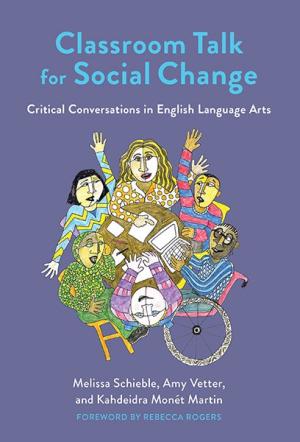
Learn how to foster critical conversations in English language arts classrooms. This guide encourages teachers to engage students in noticing and discussing harmful discourses about race, gender, and other identities. The authors take readers through a framework that includes knowledge about power, a critical learner stance, critical pedagogies, critical talk moves, and vulnerability. The text features in-depth classroom examples from six secondary English language arts classrooms. Each chapter offers specific ways in which teachers can begin and sustain critical conversations with their students, including the creation of teacher inquiry groups that use transcript analysis as a learning tool. (From the Publisher)
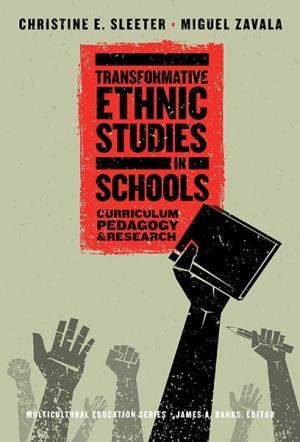
This timely and compelling book conceptualizes Ethnic Studies not only as a vehicle to transform and revitalize the school curriculum but also as a way to reinvent teaching. Drawing on Sleeter’s research review on the impact of Ethnic Studies commissioned by the National Education Association (NEA), the authors show how the traditional curriculum’s Eurocentric view of the world affects diverse student populations. The text highlights several contemporary exemplars of curricula—from classroom level to district or state-wide—illustrating core concepts in Ethnic Studies across a variety of disciplines and grade levels. A final chapter considers how research on P–12 ethnic studies can be conceptualized and conducted in ways that further both advocacy and program sustainability. Transformative Ethnic Studies in Schools is essential reading for educators working to transform schools by rehumanizing learning spaces for all students. (From the Publisher)